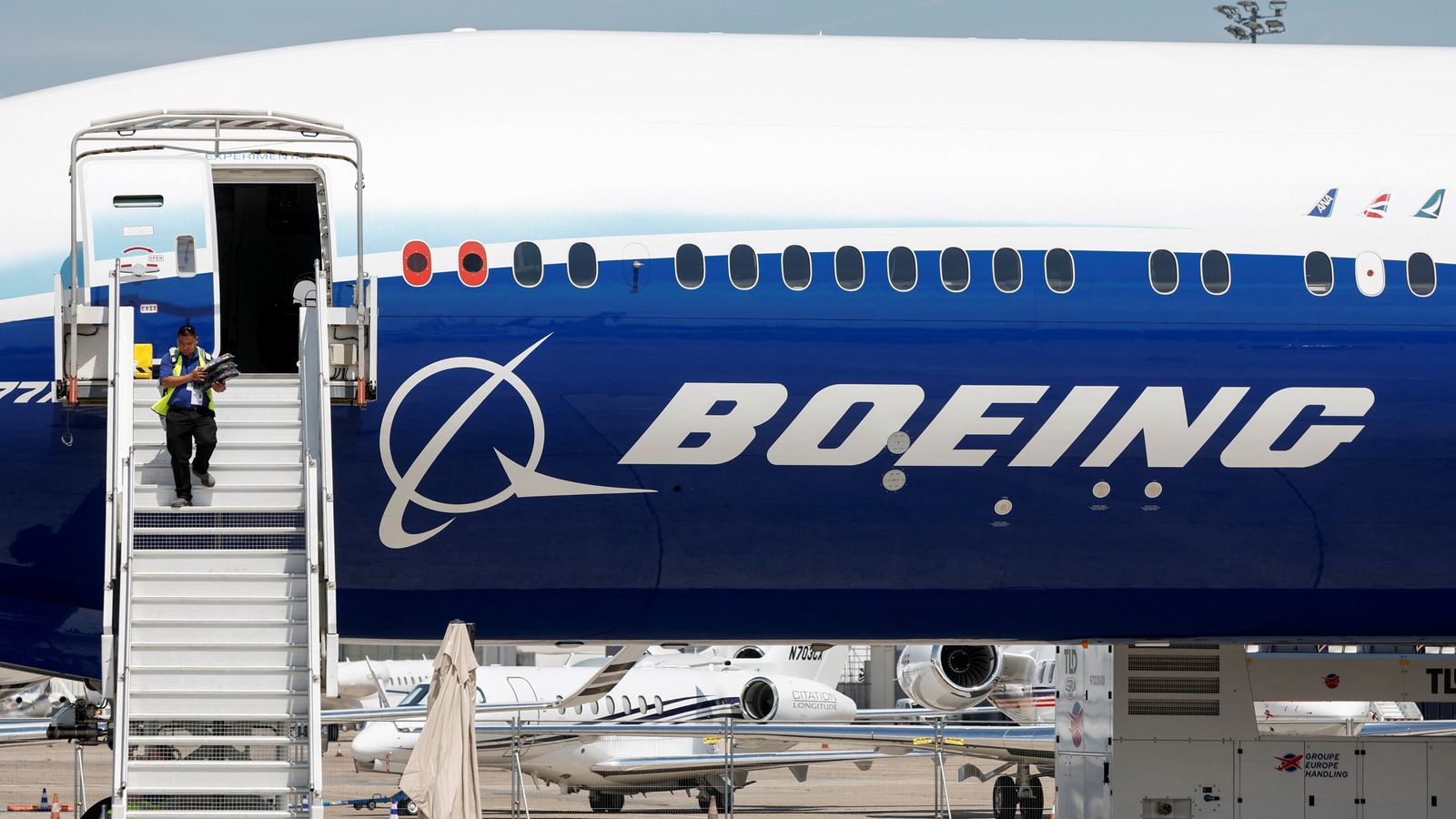The scale of the management changes announced by Boeing are a recognition from the company of the grave situation in which it finds itself.
It is pretty rare for the chairman and chief executive of an organisation to step down at roughly the same time as Larry Kellner and Dave Calhoun are doing.
For the departure of another senior executive, running one of that company’s most important businesses, to be announced at the same time is almost without precedent.
Stan Deal, who steps down immediately as head of Boeing‘s commercial airlines operation, is clearly carrying the can for the crisis to have engulfed the 737 MAX 9 jet which has been subject to mass groundings since the incident, in January, in which one of the jets, operated by Alaska Airlines, suffered the blowing-out of a door plug in mid-air.
Money latest: Get ready for 3% interest rates, respected economists predict
Since then, Boeing has had to launch a root-and-branch investigation of its fuselage production to ensure that nothing like that happens again.
It has also had to tell some of its customers, most notably Ryanair in Europe and Southwestern Airlines in the United States, that deliveries of the aircraft will be subject to delays. That has led customers to rethink their flying schedules during the key summer months and Ryanair, for one, is demanding compensation.
Ofgem launches consultation on changes to energy price cap
Apple, Meta and Google parent company investigated by EU
Government stake in NatWest now under 30%
What is especially damning about the departure of Mr Calhoun, in particular, is that he is now the second consecutive Boeing chief executive to be forced to step down due to questions over its poor quality of production and supply chains.
The man he replaced, Dennis Muilenberg, was sacked at the end of 2019 following two crashes involving an earlier version of the 737 MAX – a Lion Air flight in Indonesia in October 2018 and an Ethiopian Airlines flight in March that year – that claimed the lives of hundreds of people. On that occasion, Boeing was heavily criticised for not acting more quickly, with Mr Muilenberg’s continued occupation of the CEO’s office distracting from the company’s attempts to rebuild its relationships with its customers and regulators.
Please use Chrome browser for a more accessible video player
Mr Calhoun’s decision to depart at the end of the year suggests Boeing has learned from that experience but also reflects the fact that he failed in his most crucial role – to improve production quality – and clearly that has rattled the confidence of investors.
Their mood will not have been improved by a report in the Wall Street Journal last week that the chief executives of some of Boeing’s biggest airline customers in the US had requested a meeting with Boeing’s board to express concern over the Alaska Airlines accident and the subsequent production problems with the 737 MAX 9.
The outgoing CEO did his best today to suggest that this was part and parcel of the normal process of succession – telling CNBC’s Phil LeBeau that he would be 68 at the time of his departure, having been in the role for five years, making it an obvious time to step down.
Please use Chrome browser for a more accessible video player
But this is not a normal CEO succession, not when Mr Kellner and Mr Deal – who has spent nearly 40 years at the company – are also stepping down. It is emblematic of a company in crisis.
That Boeing – America’s biggest and most important manufacturing business – has been able to immediately announce a new chairman of the quality of Steve Mollenkopf, the former Qualcomm chief executive, will at least provide some reassurance.
His first task will be identifying a new chief executive. Stephanie Pope, who had only just been made chief operating officer before her second ‘battlefield promotion’ this year to replace Mr Deal, will obviously been seen as a contender.
However, it feels likely that Boeing investors will press him to appoint someone from outside the company, someone not tainted with the production disasters of the last few years.
In one way, though, Mr Calhoun does deserve some sympathy.
Be the first to get Breaking News
Install the Sky News app for free
Read more:
Ryanair boss declares passengers are safe despite Boeing issues
Boeing axes 737 MAX chief after mid-air scare
US regulator increases oversight of Boeing
Boeing used to be run by engineers who took immense pride in what the company did. It was a key contractor in Apollo 11, the NASA mission that first put man on the moon, as well as the Space Shuttle – the world’s first reusable spacecraft.
More recently, the focus has been on financial engineering, with share buybacks given a greater priority than research and development. The 737 MAX family was emblematic of that – it was merely a re-engineering of the old 737 family of jets rather than a complete rethinking of what customers might want.
Airbus, which took a more conservative approach to its balance sheet, was by contrast more able to rethink its aircraft designs and invest in R&D. The European company’s reward is that it has now comprehensively overtaken Boeing in terms of production and aircraft sales.
In an ideal world, this boardroom reset would be aiming to recapture Boeing’s past glories.
For now, though, the task for the new management will be to rebuild the confidence of regulators, customers, investors and employees. It is that serious a situation.




